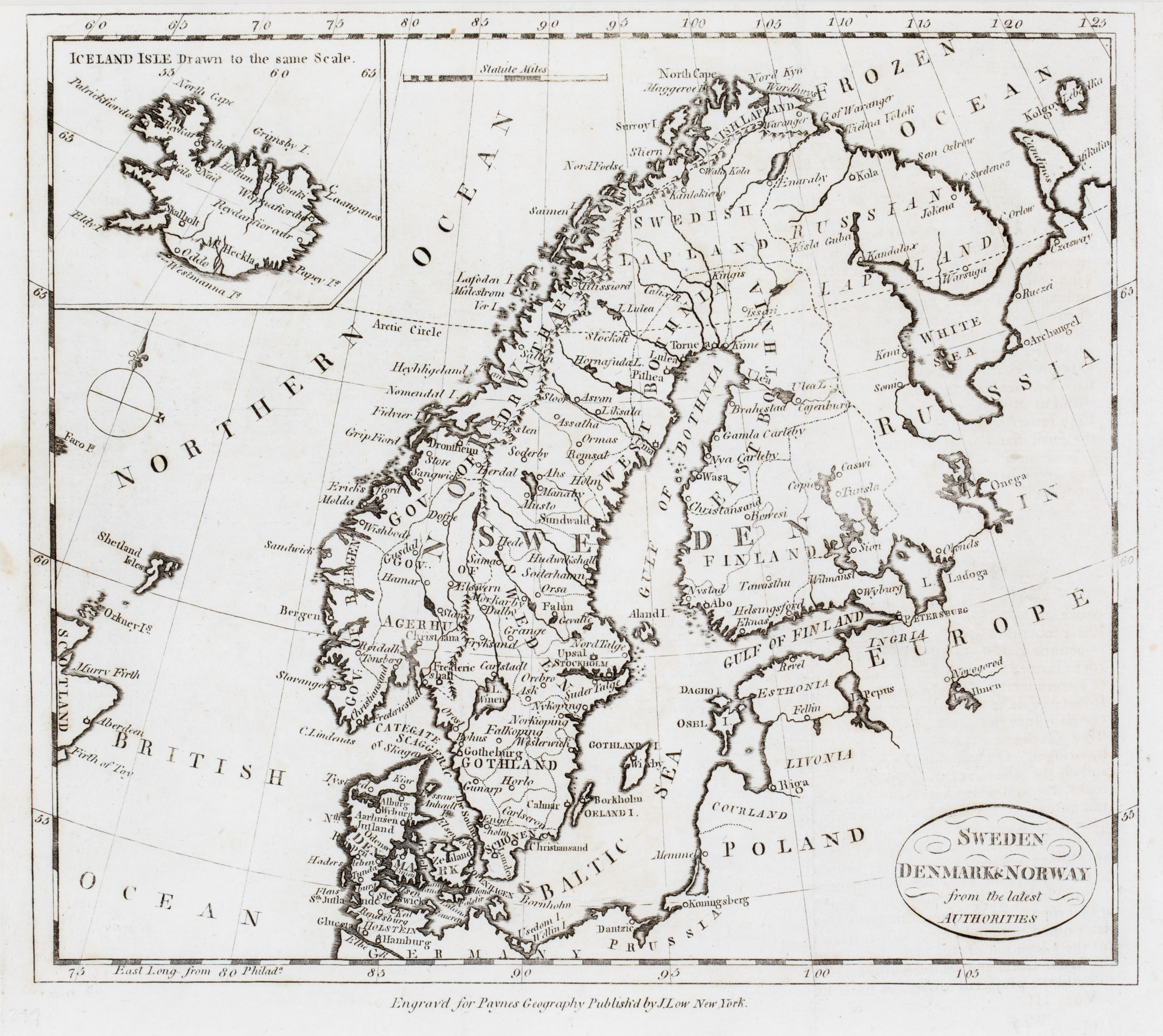John Low (1763 – 1809)
was a New York based printer and publisher. Born in London he immigrated to America with his wife Esther shortly after the birth of their son John (c. 1790 – 1829). By 1795, John Low had established himself as a printer and bookseller in New York City.
John Low is best known for publishing John Payne‘s „A New and Complete System of Universal Geography“ which first appeared in 1798. Many of his maps re-appeared in Low‘s „Encyclopaedia“, titled „The New and Complete American Encyclopaedia or Universal Dictionary of Arts and Sciences“ which was published from 1805. After his death his wife Esther ran their printing business.
John Payne was a little known American cartographer and map publisher based in New York and Philadelphia in the last years of the 18th century. His work is not only important as one of the first examples of commercial cartography but also his method of treating a subject, to draw from the best available sources of information instead of borrowing from compendiums of history. Except from his famous „Geography“, nothing is known about his life.
Map details
According to the information underneath the neatline this map was engraved for Payne‘s „A new and Complete System of Universal Geography“. The author and the title are to be found in an oval frame in the lower right corner. The map shows a part of the Faroe Islands, the Orkney and Shetland Islands, the east coast of Scotland, Scandinavia, the Baltic region, „Russia in Europe“, Poland and the northern part of Prussia and Germany, including Iceland in a pentagonal inset in the upper left corner. Underneath the inset a windrose and in the upper center a mileage scale are placed. The Arctic circle is drawn in the main part of the map but not in Iceland.
In the inset, „Iceland Isle Drawn to the same Scale“ is written on top. Along the coastline and in the interior of Iceland only few place names are to be found, amongst them the bishoprics Skalholt and Holar („Holum“) without church symbols and „Mt Heckla“ with a volcano nearby.



